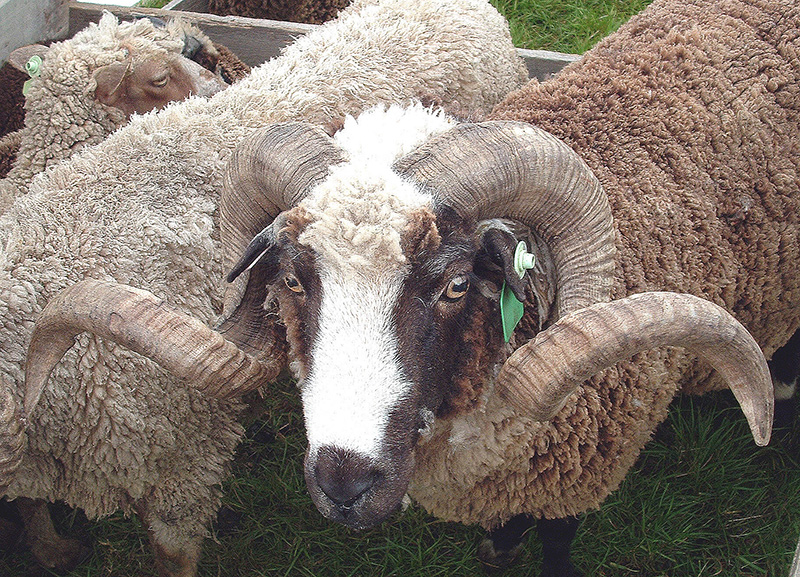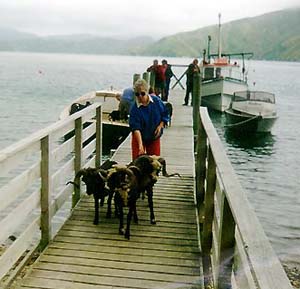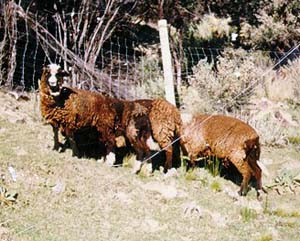Arapawa Island Sheep
The origin of the Arapawa sheep is not certain, but historical records indicate that sheep have been on Arapawa Island in the Marlborough Sounds, New Zealand, for nearly 140 years. They are considered a rare and endangered breed. There are many theories on the origin of the sheep. The most probable origin for the Arapawa feral sheep is that they are escapees of a flock of mainly Merino origin, known to have been introduced in 1867, the original stock having undoubtedly come from Australia. Other theories imply that they are Middle Eastern breed introduced by the whalers, or that the sheep landed on the Arapawa island from a Spanish galleon as far back as the 1500s.
Arapawas are rather prehistoric looking wild sheep. They are not large sheep, being rather lean and light-boned. The clear narrow face and head, with alert bright eyes, is set on a long neck and topped with slender ears. Rams may have spiraled horns which can be over a meter in length. Their light build, together with their rather long legs, makes them a very attractive sheep as benefit animals which had to survive for more than a century in very steep and hostile terrain – not infrequently invaded by equally hostile human hunters. In repose Arapawas carry their heads rather low, and it is this tendency coupled with low-set long tails, which gives them a hunched look.
Their most common coloring is all black – with a depth of blackness which is particularly striking in the lambs – but Arapawas may often have white points, and on very rare occasions be pure white. The most strikingly colored are those which are spotted with white over the whole body, and which are often referred to as 'cocktail' Arapawas. The bulky fleece is of Merino-like fineness with a natural tendency to be shed, as occurs in most wild sheep. The animals are also naturally more resistant to fly-strike and are being used in breeding experiments with the hope of introducing this characteristic into commercial flocks.
There are still some Arapawa sheep on the island and several thousand are now found in flocks throughout New Zealand.
References
Mason, I.L. 1996. A World Dictionary of Livestock Breeds, Types and Varieties. Fourth Edition. C.A.B. International 273 pp.
Betty Rowe, Picton, New Zealand Rare Breeds Conservation Society of New Zealand



